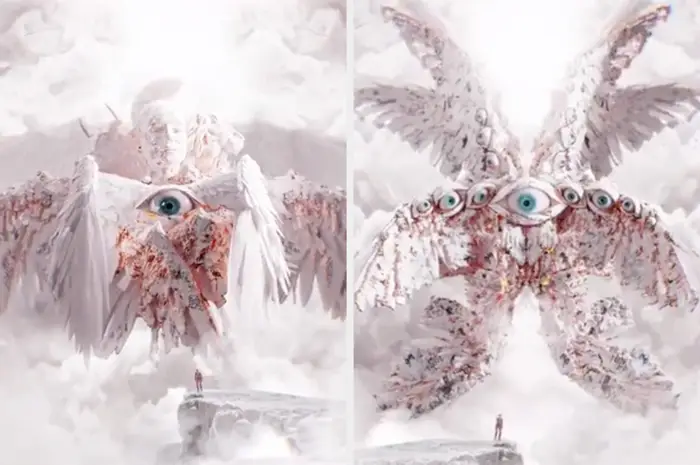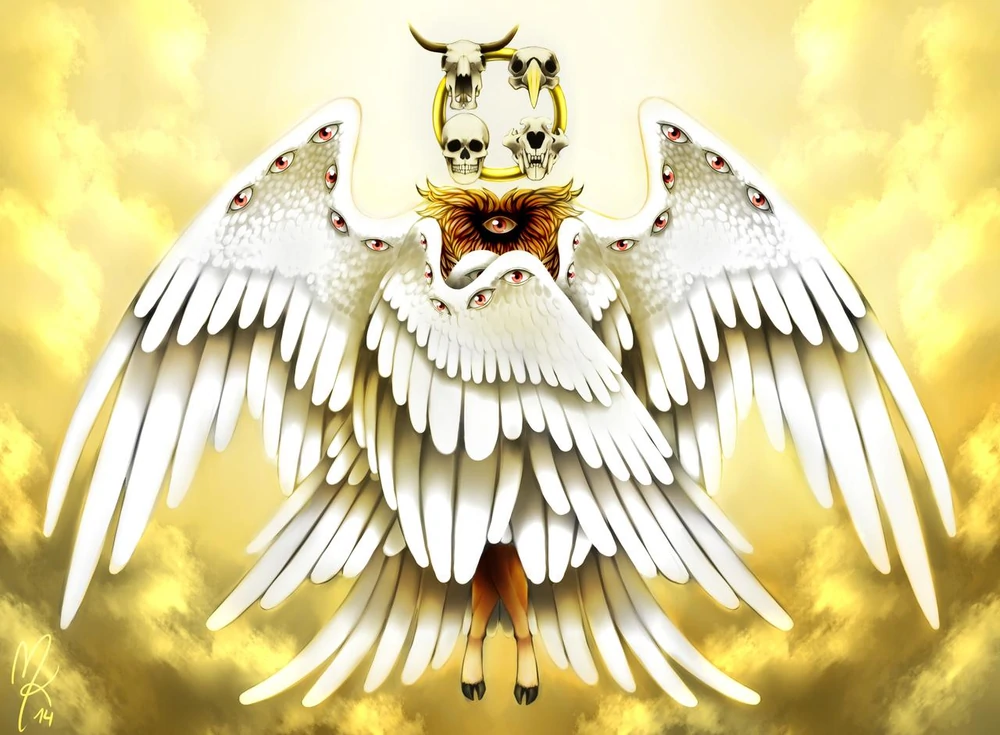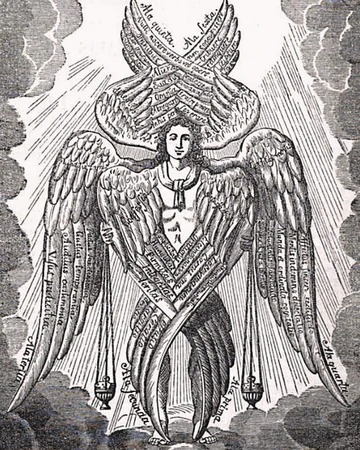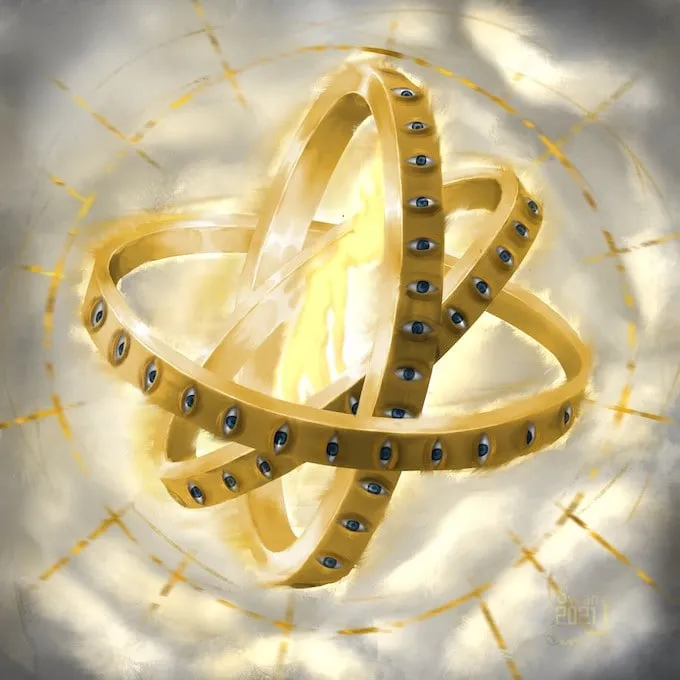Last updated on November 7th, 2022 at 05:50 am
Glorious humanoids with gilded armors, beautiful wings, perfect faces, and an all-righteous nature that brings warmth, comfort, and solace — that’s how we picture angels. After all, that’s how we’ve depicted the majestic creatures throughout history in every piece of art and literature.
Is this common description a portrayal of our reimagination, or does it have a striking resemblance to angels who rule heaven?
According to the Bible, it would appear that we’re in the wrong. Unlike the gentle, human-like apparitions we’re familiar with, angels look strange, terrifying even. And it would appear that there’s a good reason behind it.

Conceptualizing Angels: A Brief History
The word “angel” has a couple of origins. It is derived from the Greek word “angelos,” and the Greek word, in turn, comes from the Hebrew word “Mal’ akh,” which stands for messenger.
When we’re visualizing an angel, we’re often thinking of Malakim, who acted on God’s behalf in the Old Testament to carry out his judgment and took on the role of messengers in the New Testament.
Malakim are said to be the closest depiction of human beings. However, they are not mentioned in the Bible as beings with wings.
Indeed, the earliest known Christian image of an angel, from the mid-third century, depicted them as human-like beings without wings.
This image, however, changed in the late fourth century as artists reimagined angels with wings to represent their sublime nature, even though the scripture makes no mention of wings.
Popular Angels and Their Biblical Forms
Let’s take a look at some of the most well-known depictions of the angels we’re familiar with and how much they differ from their Biblical descriptions.
Cherubim
According to the Bible, cherubim are responsible for guarding the Garden of Eden — the Biblical terrestrial paradise — against humankind when Adam and Eve, the first humans, were driven out of the heavenly garden.
The prophet Ezekiel’s vision of cherubim is depicted in the Book of Ezekiel in which they are portrayed as having four faces — one of an eagle, one a human, one an ox, and finally a lion.
Cherubim have straight legs, four wings (one set covers their body while the other is used for flying), and bull hooves for feet.

This portrayal is nothing like what we imagine them to be. Cherubim, commonly known as cherubs, are depicted as chubby, beautiful, naked children with wings in art, as represented by Renaissance sculptors who revived the ancient practice of putti.
These depictions of Cherubim are often connected with divinity. These animal-human hybrids have also been associated with cupids, the diaper-clad chubby babies who are sometimes shown with a trumpet and arrow to symbolize romantic love.
Some attribute this modern-day image to cupid-like Greek and Roman deities. On the other hand, the Biblical image is frequently attributed to cultural exchanges with ancient Babylonia, Egypt, and Syria, which explains their mixed appearance.
Seraphim
According to the Christian angel hierarchy, seraphim hold the highest rank. In art, the four-winged cherubim are painted in blue to symbolize the sky, while the six-winged seraphim are painted in red to symbolize fire.
The Hebrew term “Saraph” means “venomous desert snake” and “Seraph” means “to burn.” These terms are the two main historical influences on Seraphim’s name.
The Bible describes seraphim as having six wings, four of which are used to cover their heads and feet in front of God as a symbol of humility, and the remaining two are used to fly.
They are second in ranking in the angel hierarchy, with their sheer presence emitting holiness. And unlike the ophanim and cherubim, seraphim are not guard-angels.

Seraphim are described by prophet Isaiah as angelic beings that continually worship God by surrounding God’s throne and singing “Holy, holy, holy is the Lord Almighty; the whole earth is full of his glory” in unison when God approaches.
While they’re the epitome of helpfulness and forgiveness, their appearance instills fear in the prophet.
Several historians suggest that the description of the Seraphim’s wings and flames may have been based on the connection with Egyptian imagery and description of the cobra.
Ophanim
“Their entire bodies, including their backs, hands, and wings, were full of eyes all around, as were their four wheels.” (Ezekiel 10:12)
Ophanim, or “the wheels,” are one of the strangest, most bizarre beings referenced in Ezekiel’s vision. They’re portrayed as beings made of interlocking gold wheels, with every wheel adorned with numerous sets of eyes on the exterior.
These wheels, however, do not change directions as the creatures move by floating in the skies.

The second book of Enoch refers to ophanim as “many-eyed ones.” They are sometimes also described as spheres or whirlwinds. They’re also classified as “thrones.”
There’s an interesting theory that the ophanim are the wheels attached to God’s chariot. Others, like former NASA scientist Jose F. Blumrich, believe ophanim might have been what we would consider a UFO sighting today.
While they’re not considered angels in the Bible, the Jewish angelic hierarchy considers them responsible for guarding God’s throne and being the angels closest to God. This notion also coincides with beliefs held in different traditions.
However, the obscure description of ophanim has no exact historical origin, which is why some authors speculate that Ezekiel’s vision of the wheeled angel was caused by ingesting psychedelic substances.
The ophanim could thus be a metaphor for God’s mystery that man cannot understand or a mechanism of the Lord’s chariot that paves the way for multi-dimensional travel. We’ll never know.
Why Angels Look The Way They Do
The image we have of angels with flowing white robes, halos, and beautiful wings, is a product of art and fiction. According to actual religious text, most angels are surreal, terrorizing creatures.
So, why this discrepancy?
Let’s start with the disclaimer they come with. When angels descend upon humans, the first thing they say is something along the lines of “do not be afraid,” rather than a felicitation or a greeting.
This suggests that there’s a good chance their appearance can strike fear in the hearts of those who see them, rather than a sense of calm and comfort we associate with angels.
That’s not to say that heaven does not have its fair share of human-like angels. But, since they don’t change our perception of what angels look like, we’ll focus on the Biblically accurate angels who would actually be scary.
Now, the question is, if, as Genesis reminds us, “God saw everything that he had made, and indeed, it was very good” suggests that God creates beautiful things, why are angels made to be terrifying rather than beauty incarnate?
One theory is that humans would find angels terrifying because we would not be able to comprehend their eldritch forms. They’re mighty creations that stand by and are of service to God. As a result, when angels appear to us, their presence can emit their powerful presence.
Another theory is that angels are spiritual creatures who exist outside of time and space. So, recreating their image, complete with their heavenly light and presence as well as supernatural strength and force, using fragments of recognizable patterns that our brains can understand can be very difficult. It can lead to a rather unsettling image of angels in our minds.
This is why we compare their appearances to other creatures we know exist on Earth and can easily recognize.
Think It Can’t Get Any Weirder? Well, Think Again
As if the portrayal of angels in the Bible wasn’t frightening enough, the Book of Ezekiel also mentions that the cherubs, the same chubby little sweethearts that go around shooting love darts, were accompanied by Ophanims.
Yes, the same wheel-like beings with interlocking wheels glistening like topaz covered with eyes on the outside.
This would undoubtedly evoke an indescribable emotion bordering on heart-pounding fear — a far cry from the heavenly vision we imagine when we think of two angels working together in harmony to carry out God’s orders and bring peace and light to the world.
The ophanim, or many-eyed ones, only move in the direction of the cherubim, leading some to conclude that cherubs outranked the ophanim. It is also believed that the cherubim spirit is within the ophanim.
As to how that worked, cherubs have four faces, and seraphim face four directions, so neither need to turn to change directions. They glide smoothly through the sky to do God’s work.
Will We Ever See Angels in their Biblical Forms?
Over the years, we have reimagined angels into what we believe angels should be — glorious, pure, and immaculate human-like beings with ethereal faces and wings.
While their conceptualization has changed with time, it is believed that if we are worthy enough, we will be able to dwell alongside these strange, otherworldly creatures and see them in their real forms in heaven.
This, admittedly, can be a scary thought in and of itself.
However, appearances can be misleading. Angels, despite their appearance, are worshiping beings that give all praise to God and only act on his behalf. It implies that they have our best interests at heart, even when we ourselves may not be aware of it.


Why don’t you also describe the angles depicted in The Book of Revelations ?